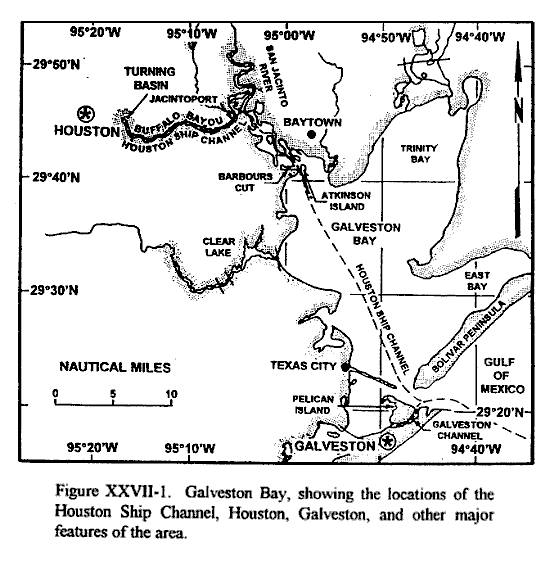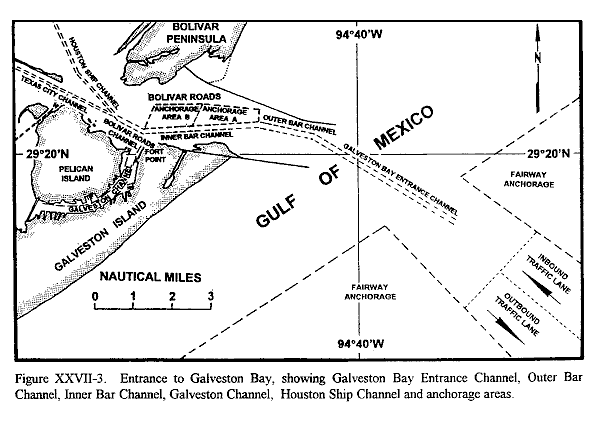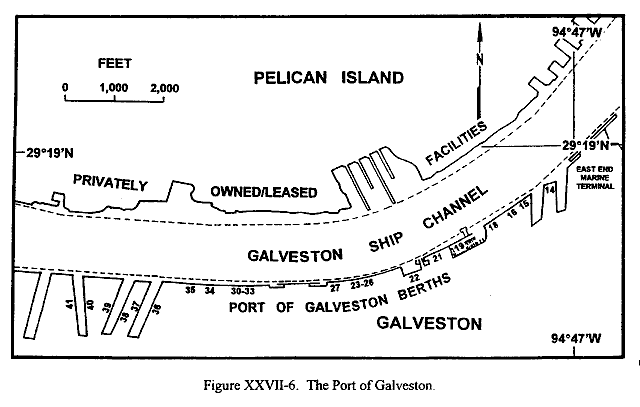





The strategic homeport program, extensively debated in Congress, enjoyed the strong support of the administration and the Department of Defense since 1985, when the strategic homeport program was viewed as the best method for implementing the militarily sound principles of dispersal, battlegroup integrity, and increasing US naval presence across the country. New homeports may have made sense when the US Navy was heading for a 600-ship Navy. Congress felt strongly enough about the merits of these principles that it provided over $28 million in appropriations for the Galveston homeport over 1987 and 1988.
But the General Accounting Office testified in 1986 that there would be no homeless ships even with no new homeports. The General Accounting Office recommended that Congress require "a demonstration of the strategic benefits and more definitive and complete cost estimates before approving funds for the new homeports." No such demonstration was made, but did not stop the Navy from proceeding with homeporting. The strategic homeporting initiative was one of the best examples of a case where politics rather than strategy or economics determined the placement or status of a military base. On January 5, 1989 Secretary of Defense Carlucci decided to adopt in totality the Commission's recommended closures and realignments. Such closures and realignments included relocation of operating forces. On 30 April 1989 Defense Secretary Cheney extended the moratorium on most military construction and announced that construction at four of the six homeports -- other than Everett and Ingleside -- would be candidates for rescission. By 1989 the had a force of 550 ships, and that number was likely to decline to no more than 420. The end of the Cold War prompted a number of reviews of the Navy's future force structure and basing needs. On April 24, 1990 the General Accounting Office testified that it was their firm recommendation that "We believe the expenditure of additional funds on new homeports should be curtailed until the Navy decides exactly what it needs." The cost of adding an additional ship to the ports at San Diego, Norfolk, or Mayport was cheaper than building new ports at Staten Island or Galveston facilities. The General Accounting Office told the Armed Services Committee that the program exceeds cost estimates by $200 million and is behind schedule. The GAO also reported that original cost estimates ignored the cost of structures and support facilities essential to homeport operations that will cost additional millions. Many residents in proposed new homeport communities expressed opposition to these projects.
The ports of Houston and Galveston, Texas are located adjacent to Galveston Bay on the northwest coast of the Gulf of Mexico. The entrance to Galveston Bay, which passes between Galveston Island and Bolivar Peninsula, is located at approximately 29�21'N 94�45'W. Galveston Bay is a relatively shallow, large and irregularly shaped body of water that extends approximately 26 nmi from north to south and 17 nmi east to west at its widest point. Several smaller bays and inlets lie on the periphery of Galveston Bay. The Port of Galveston is located on the north side of the east end of Galveston Island. The port has facilities on both sides of Galveston Channel, which extends westward from the Houston Ship Channel, passing between Galveston and Pelican Islands. The Port of Galveston Authority berths are located primarily along approximately 2 nmi of waterfront on the south side of the Galveston Ship Channel. Other facilities on the north side of the channel are leased to various commercial companies. According to documentation supplied by the Port of Galveston Authority, developed water frontage of the Port totals 33,558 linear feet. The Port has 10 open-dock ship berths, 20 berths with alongside warehouses, and nine finger piers. All deep draft facilities have water and shore power. As is the case with the Port of Houston, pilots are required for all non-USN vessels entering or leaving the Port of Galveston, and are strongly recommended for all USN ships. Pilots are normally embarked and debarked seaward of Bolivar Roads. Several commercial towing companies maintain a fleet of harbor and ocean going tugs with a wide range of sizes and capabilities at the ports of Houston and Galveston. No USN tugs are assigned. No designated anchorages exist in Galveston Bay, San Jacinto River or Buffalo Bayou. Vessels may anchor in the Gulf of Mexico in the Galveston Entrance Anchorage Areas, which are located east and southwest of the seaward end of the Galveston Bay Entrance Channel or in one of the Bolivar Anchorage Areas.

